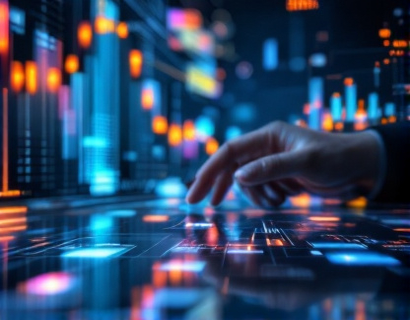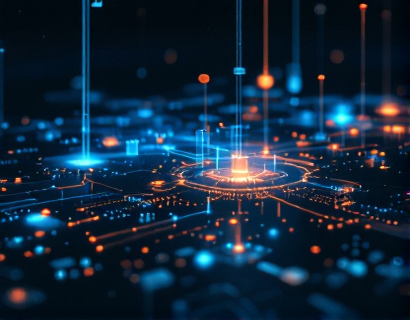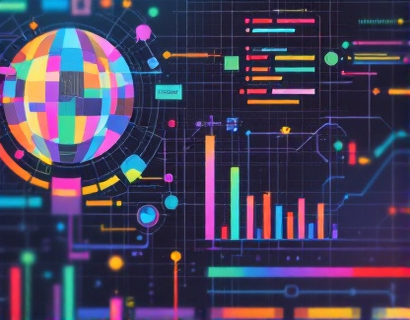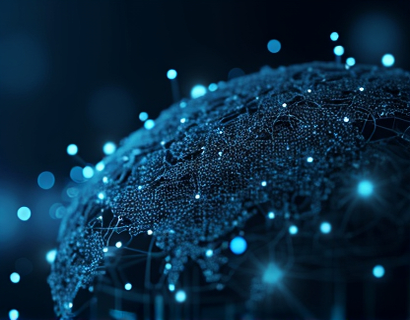Harnessing the Synergy of AI and Crypto: A New Era of Digital Productivity
The intersection of artificial intelligence and cryptocurrency is giving birth to a new paradigm in digital productivity. This fusion is not just a technological curiosity but a transformative force that is redefining how we work, interact, and manage our digital lives. As tech enthusiasts and early adopters, understanding this synergy is crucial for staying ahead in an increasingly complex and interconnected world.
The integration of AI and cryptocurrency is multifaceted, touching various aspects of digital productivity. From enhancing security and transparency to optimizing workflows and creating new economic models, the potential is vast. This article delves into the key areas where AI and crypto are converging to power the future of digital productivity.
Enhancing Security and Trust
One of the most significant benefits of combining AI and cryptocurrency is the enhancement of security and trust in digital transactions. Traditional systems often rely on centralized authorities to verify and secure data, which can be vulnerable to breaches and manipulation. Cryptocurrency, particularly those built on blockchain technology, offers a decentralized and immutable ledger that ensures data integrity.
AI plays a crucial role in this ecosystem by providing advanced analytics and machine learning algorithms to detect and prevent fraudulent activities. For instance, AI can analyze patterns in transaction data to identify anomalies that may indicate a security breach. Smart contracts, self-executing contracts with the terms directly written into code, can be enhanced with AI to automatically respond to potential threats, ensuring that transactions are secure and trustworthy.
Moreover, AI-driven identity verification systems can integrate with cryptocurrency wallets to provide robust authentication mechanisms. This not only protects user assets but also streamlines the onboarding process, making it more efficient and user-friendly. The combination of AI and crypto thus creates a secure environment where users can transact with confidence.
Optimizing Workflows with AI-Powered Tools
The workplace of the future is characterized by automation, efficiency, and seamless integration of tools. AI-powered applications are revolutionizing how tasks are managed and executed, and when combined with cryptocurrency, they offer even more compelling benefits. For instance, AI-driven project management tools can predict project timelines, allocate resources, and optimize workflows based on real-time data analysis.
Cryptocurrency can enhance these tools by providing a decentralized and transparent way to manage payments and incentives. Smart contracts can automate the distribution of funds based on predefined criteria, ensuring that team members are compensated fairly and promptly. This not only reduces administrative overhead but also builds trust among team members, as the system is transparent and tamper-proof.
Additionally, AI can analyze the performance of various tasks and suggest improvements, while cryptocurrency can facilitate the trading of digital assets or tokens that represent work credits or rewards. This creates a dynamic and flexible system where productivity is directly linked to tangible incentives, motivating users to perform at their best.
Decentralized Data Marketplaces
Another exciting area where AI and cryptocurrency intersect is in the creation of decentralized data marketplaces. In traditional models, data is often centralized and controlled by a few large corporations, leading to privacy concerns and data monopolies. A decentralized approach, powered by blockchain and AI, can empower individuals to own and monetize their data.
AI algorithms can process and analyze vast amounts of data to identify patterns, insights, and trends. This data can be sold on decentralized marketplaces, where users can choose to sell their data to the highest bidder or to specific entities that align with their values. Cryptocurrency ensures that transactions are secure, transparent, and directly between the data provider and the buyer, eliminating intermediaries and reducing costs.
Moreover, AI can enhance the value of the data by providing context and meaning. For example, AI can tag and categorize data, making it more searchable and useful for analytics. This not only increases the demand for high-quality data but also creates new revenue streams for data providers. The combination of AI and crypto thus democratizes data, giving power back to the individuals who create it.
Tokenized Incentives and Gamification
Tokenization, a concept deeply rooted in cryptocurrency, can be combined with AI to create powerful incentive systems. Tokens can represent various forms of value, from monetary rewards to access to exclusive services or community privileges. When integrated with AI, these tokens can be used to gamify tasks and workflows, making them more engaging and motivating.
AI can analyze user behavior and preferences to design personalized incentive structures. For example, an AI-driven platform can offer tokens for completing specific tasks, with the value of the tokens adjusted based on the difficulty and importance of the task. This ensures that users are motivated to contribute meaningfully to the community or project.
Furthermore, AI can predict which incentives will be most effective for different user segments, optimizing the overall engagement and productivity. By leveraging machine learning, the system can continuously refine its approach, ensuring that the incentive structures remain relevant and impactful over time. This creates a virtuous cycle where increased productivity leads to greater rewards, which in turn drive even higher performance.
Supply Chain Transparency and Efficiency
The supply chain industry stands to benefit significantly from the fusion of AI and cryptocurrency. Supply chains are complex and often opaque, with multiple parties involved in the production and distribution of goods. Blockchain technology provides a transparent and immutable record of transactions, while AI can optimize various aspects of the supply chain.
AI can predict demand, optimize inventory levels, and streamline logistics by analyzing vast amounts of data in real-time. This reduces waste, lowers costs, and ensures that products reach consumers efficiently. Cryptocurrency can facilitate seamless and secure payments between different stakeholders, from manufacturers to retailers, without the need for intermediaries.
Smart contracts can automate payments based on the successful completion of specific tasks, such as the delivery of goods or the completion of quality checks. This not only speeds up the process but also reduces the risk of disputes and errors. The combination of AI and crypto thus creates a more transparent, efficient, and trustworthy supply chain ecosystem.
Conclusion
The convergence of AI and cryptocurrency is not just a technological novelty but a powerful force that is reshaping the landscape of digital productivity. By enhancing security, optimizing workflows, creating decentralized data marketplaces, implementing tokenized incentives, and improving supply chain efficiency, this synergy offers a multitude of benefits for tech enthusiasts and early adopters.
As we move forward, it is essential to stay informed and adapt to these changes. The future of digital productivity is being redefined by innovative solutions that leverage the strengths of both AI and cryptocurrency. By embracing these technologies, we can unlock new possibilities and drive meaningful advancements in how we work and interact in the digital world.










































